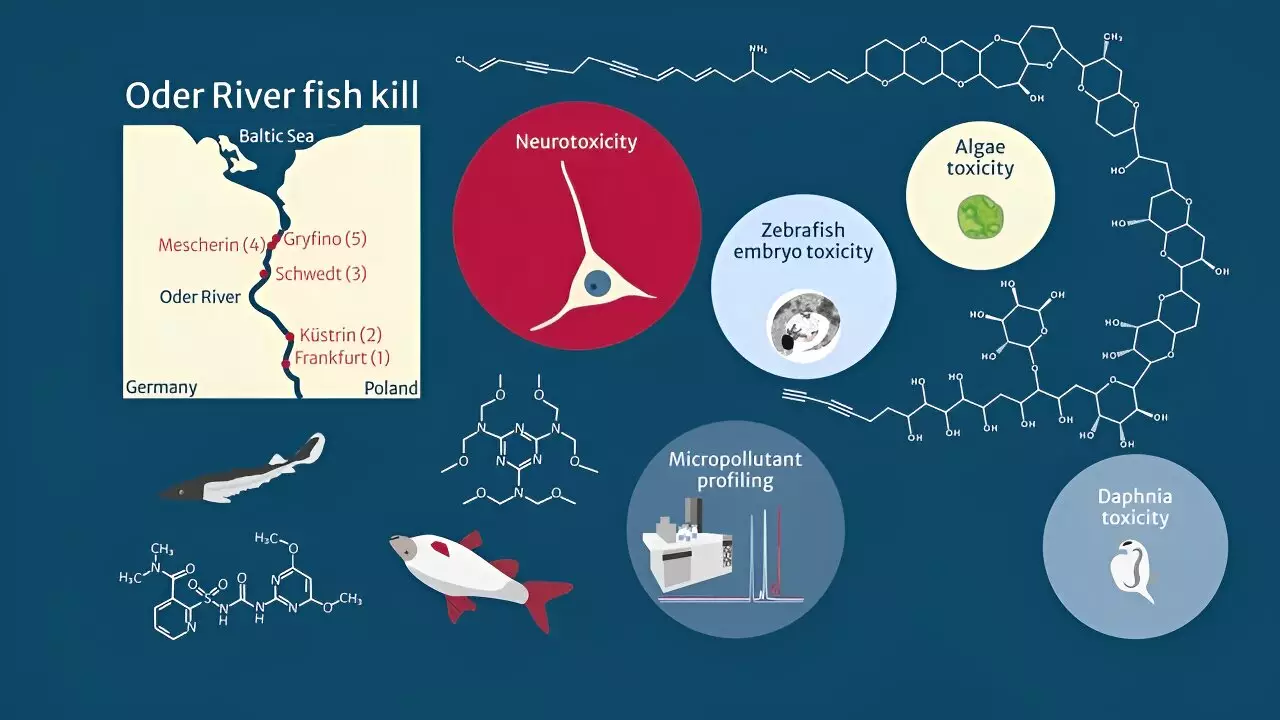Water pollution is a pressing issue that continues to have devastating effects on river ecosystems around the world. Recently, the Oder River in Germany experienced a catastrophic environmental disaster due to a combination of factors, including excessive salinity, high water temperatures, low water levels, and the presence of organic micropollutants. Scientists have identified the brackish water algae Prymnesium parvum as the primary culprit behind the mass deaths of fish, mussels, and snails in the river.
A team of researchers led by the Helmholtz Center for Environmental Research (UFZ) conducted a comprehensive study to investigate the impact of water pollution on aquatic organisms in the Oder River. Their findings, published in Nature Water, revealed that the presence of organic micropollutants in the water exacerbated the lethal effects of the algal toxin prymnesin. This toxic cocktail led to the death of up to 60% of fish biomass and up to 85% of mussel and snail biomass in the affected area.
The researchers detected over 120 organic micropollutants in water samples collected from various locations along the Oder River. While most of these pollutants were likely discharged from sewage treatment plants, the team also found industrial chemicals and agricultural pesticides in the water. Although the concentrations of these chemicals were not exceptionally high, they posed a significant risk to aquatic organisms when combined with the algal toxins present in the river.
To assess the potential harm posed by the detected pollutants, the researchers calculated mixture risk quotients (RQmix) based on the measured concentrations of the chemicals. The RQmix values exceeded the threshold value of 1, indicating a significant risk to aquatic life in the Oder River. Laboratory experiments further confirmed the toxic effects of the chemical cocktail on algae, water fleas, and zebrafish embryos, highlighting the widespread impact of water pollution on river ecosystems.
In vitro assays conducted by the research team demonstrated the neurotoxic effects of prymnesins and organic micropollutants on human nerve cells. Even at low concentrations, prymnesins were found to inhibit the growth of nerve cells and induce cell death. The combination of prymnesins and other neurotoxic micropollutants in the water extracts intensified the harmful effects on aquatic organisms, underscoring the complexity of the pollution problem in the Oder River.
The study’s findings suggest that the combination of algal toxins and organic micropollutants presents a serious threat to the biodiversity and health of the Oder River ecosystem. The researchers emphasized that the detrimental effects of pollution on aquatic organisms could have far-reaching consequences beyond what was observed in their study. Urgent action is needed to address the root causes of water pollution and mitigate its impact on river ecosystems to prevent future environmental disasters.


Leave a Reply